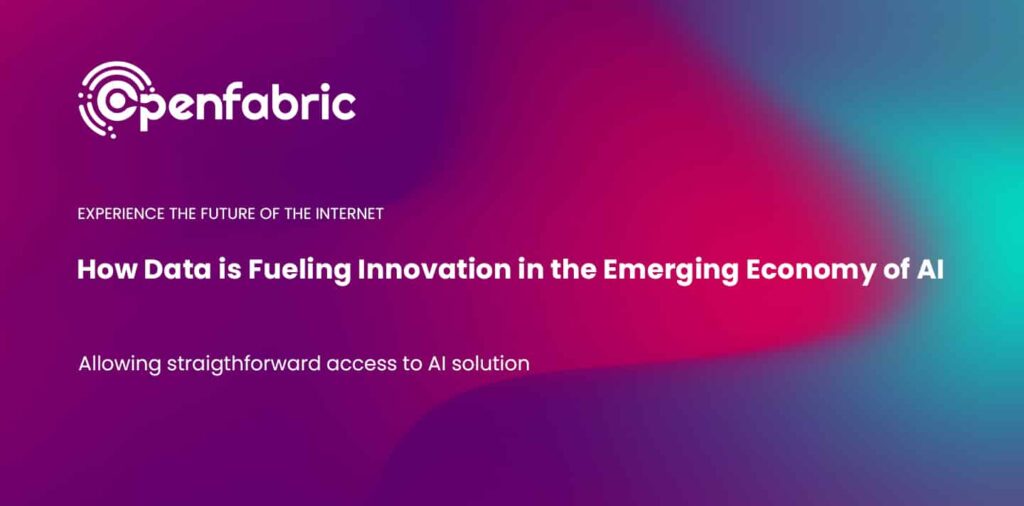
April 29, 2022 5 minutes read
How Data is Fueling Innovation in the Emerging Economy of AI

The phrase ‘data is the new oil’ has been thrown around casually in almost every tech circle for quite some time now. In fact, there is a good reason behind this statement. With the boom in artificial intelligence, smart devices, and the field of data sciences, the availability of data has increased manifold. Companies all over the world are striving to gain and store as much data as they can. This is due to the fact that it plays a pivotal role in leveraging the AI algorithms of today. Data is the necessary first step to achieving innovation and growth.
Data is essential as it helps in enhancing the customer experience, for example, companies are quickly discovering that data is a strategic asset rather than some useless by-product. Advanced hardware platforms are running analytics, AI, and machine learning programs using data as their raw material. For instance, consider the retail experience. Data from location sensors enables the company to route shipments more efficiently. Checkout flows are being optimized by analyzing where customers spend most of their time. Also, information from wearables allows the company to monitor the movement of employees and machinery and helps prevent injuries.
It doesn’t just end here. The ability to collect more and more data from the various aspects of our lives leads to useful applications of AI. For example, the early detection of diseases is possible due to the advanced algorithms that analyze genetic information. This has enabled us to save countless lives.
Data is Everywhere
Gone are the days when businesses treated data as some waste that is produced as a result of their business processes. Its value is being understood by more and more people and now it is seen as a fuel for running the business rather than an unnecessary side-effect.
This has been made possible by overcoming the hurdles that were associated with data. In the past, these challenges prevented the usage of data to fuel innovation but now the obstacles are gradually being removed.
- The first obstacle lies in understanding the data. There is a severe shortage of data scientists but the number is steadily rising and individuals are quickly learning how to transform data into information.
- While data is coming in from all sorts of devices like web, mobile, and IoT, only the ability to aggregate it allows us to view the whole picture.
- Data can be faulty or filled with noise, so it has to be cleaned to obtain only the essential bits. As with any fuel, the purer it gets, the better its results.
Even though there is no shortage of data, we can only use it to fuel the AI engine if we fulfill the conditions mentioned above.
Fueling AI Innovation
The digital economy works on three I’s – Information, Insight, and Iteration.
As we discussed earlier, there is an ample supply of information. Now that businesses have become more aware of the importance of information, they are accumulating more detailed data about their customer behaviors. This information is then processed by data experts to produce valuable insights. However, even if a business manages to gather scores of insights, they alone do not change anything. The third step ‘Iteration’ is where the magic happens. Once you have collected the user data and discovered key insights, now is the time to tweak your offering and iterate it into a version that users truly desire.
Great products are constantly following this cycle and iterating to offer their users more value. By following this process you can figure out where the future is headed and innovate to bring forward a better product. This is how data fuels innovation.
AI truly helps businesses increase their value exponentially. It not only helps with insights but automation also leads to reduced costs and offers speed, consistency, and scalability. Data remains at the heart of all of this.
According to Accenture, “3 out of 4 C-suite executives believe that if they don’t scale artificial intelligence in the next five years, they risk going out of business entirely”. The report by Accenture also suggests that AI could double the annual economic growth rate by 2035, and boost labor productivity by up to 40 percent. These stats truly indicate the power that data-fueled AI possesses.
Therefore, it is not wrong to say that by carefully using data with the right AI tools, we can bring disruptive changes in almost every sector of the economy. This will lead to new avenues of growth and help us address many of our current challenges. For example, AI tools can be used to counter the harmful effects of climate change and save lives by predicting natural disasters. Agricultural usage of artificial intelligence can solve food security issues and the healthcare field can also benefit from new life-saving cures. The emerging data economy can also help solve unemployment by creating jobs and promoting economic growth.
The Future of Data and AI
According to IHS Markit, the number of devices connected to the Internet of Things will reach 125 Billion by 2030. This impressive figure shows that the fuel of the new economy of AI is in endless supply. The potential for insights that can be drawn from this data is enormous. This will help boost AI innovation at an unprecedented scale. If you have access to the data, the possibilities for growth are tremendous. With its power, you can help shape a better future.
It is worth mentioning that with great data comes great responsibility. Responsibility for abiding by the data privacy laws and ensuring that no unauthorized use of AI takes place as it can not only prove harmful for the users but also adversely affect the reputation of AI innovation. To counter this it is necessary to implement confidentiality, transparency, and security into AI programs. Data must also be managed and stored securely and ethical collection and use of data must be promoted.
Be Part of the New Economy of Innovation
Openfabric enables you to benefit from the data economy by providing you with AI tools to understand your audience in a far better way than was possible before. This leads to a highly specialized product that sets itself apart from the one-size-fits-all approach and caters to all of your users in the best possible way. We believe in the democratization of AI and empower you to innovate and produce the valuable products of the future.
Our tools also help address the pitfalls of the data economy and make sure that your product abides by all data standards and privacy laws. You do not need to be an expert data scientist to use them, they are made for everyone.
To learn more about how Openfabric works and how you can make the most out of our AI tools, follow us on Twitter, Telegram, Linkedin, and Facebook.

